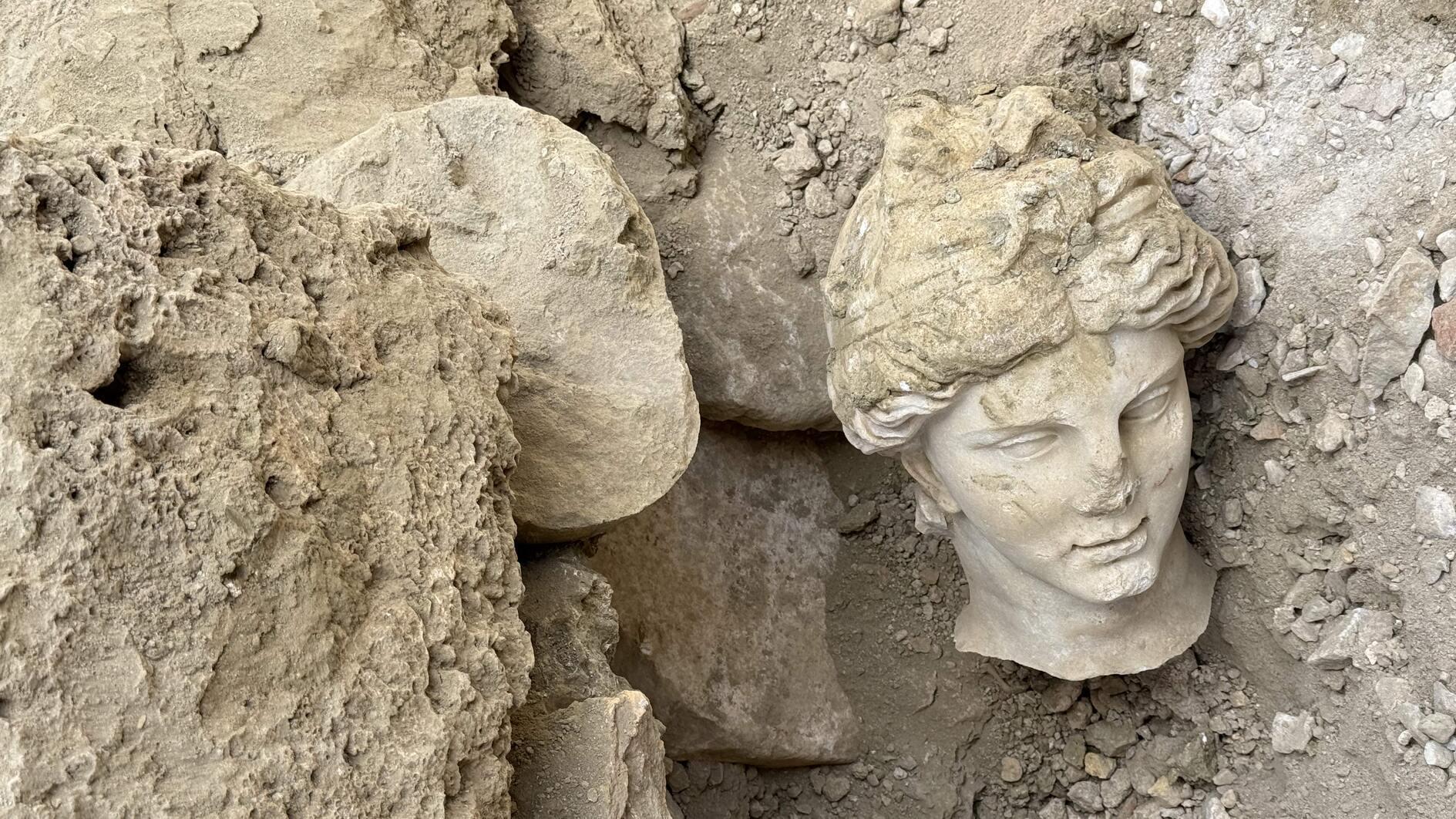
After the statue of Asclepius, the god of medicine in Greek and Roman mythology, the statue head of his daughter, Hygieia, has been unearthed during the ongoing excavations carried out in the ancient city of Laodicea in the western province of Denizli, which is on the UNESCO World Heritage Tentative List.
Laodicea’s history dates back to 5500 B.C. It is home to one of the seven churches mentioned in the Bible.
Excavations carried out in the Western Theater area unearthed a statue of Asclepius this year. After this finding, the head of the statue of his daughter, Hygieia, was found on May 20. Unearthing of the head of the Hygieia statue after 2,100 years caused great excitement in the excavation site, while efforts to unearth its body continue.
The head of the excavations, Professor Celal Şimşek, said that an important part of the work in the ancient city was the Western Theater stage structure, which dates back to the Hellenistic Period in the second century B.C.
He mentioned the importance of the statues of Asclepius and Hygieia, among other artifacts, saying, "Both statues were made in the late Hellenistic-early Augustus Period in the classical style. The statues of the god and goddess of health reveal the presence of the Herophileion medical school in the ancient city of Laodicea and the ancient writer Strabo, one of the important doctors trained there. All statues have very fine workmanship and are of high artistic quality.”